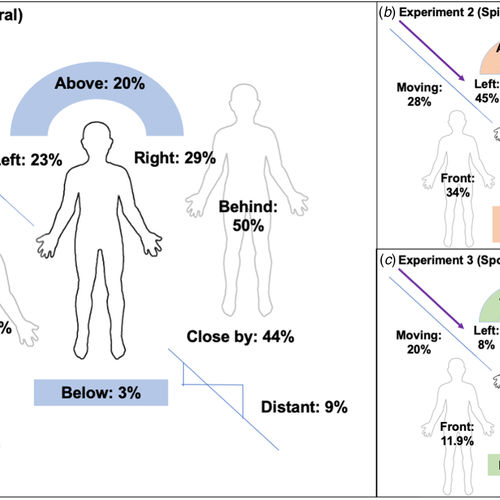
| Added | Mon, 01/11/2021 |
| Источники | |
| Дата публикации | Mon, 01/11/2004
|
| Феномены |
Yesterday, most countries of the world celebrated one of the most cheerful holidays with religious roots. Halloween originates from Celtic legends about druids. The Celts had srechi - the beginning of the seasons. On October 31, Samhain was celebrated – the arrival of winter. The Celts believed that on New Year's Eve the border between the worlds of the dead and the living opens, and the shadows of the deceased in the past year visit the earth. Therefore, in order not to become prey to the dead, people extinguished the fires in the houses and dressed up as scary as possible, hoping to scare away the ghosts that had crawled over the open border. And it was even better not to go out at all after sunset. When Christianity supplanted the Druids and became the dominant religion, Pope Boniface IV in the seventh century approved November 1 as All Hallows Day, on which saints and martyrs were supposed to be glorified. And the night before was called "All Hallows Eve" (All Hallow's Eve – the eve of All Saints' Day).
As it turned out, the South Urals are no less superstitious than the ancient Celts. Correspondents of the "New Region" devoted last night to collecting stories about mysterious phenomena, oddities and just horror stories that South Ural residents scare each other from generation to generation. All the details are in the new special project "Legends and myths of the Southern Urals".
1. Horror stories for children
In Ust-Katava, children are frightened by a crazy little girl. At one time, there were rumors about this old woman that she lures little girls into her house and makes dolls out of them. Some young ladies even claim that they visited her and saw many, many different dolls. Crazy Lyudochka offered them to eat something or sit alone for a while while she went to the store for sweets. She was supposed to feed the girls herbal potion, and they turn into dolls. Lyudochka actually existed, however, after her death no dolls were found in the house, and the rumors gradually died down. But after a while, the younger generation of Ust-Katava again remembered about Lyudochka. Now the children are being abducted by her spirit. The old ghost does not disdain boys either: she makes tin soldiers out of them.
There is a grave near the Trekhgorny country camp. The children claim that a young gypsy who fell in love with a girl from someone else's camp is buried in it. They ran away together, but the girl's father shot the guy. And she lived nearby, and her soul still guards the peace of her beloved. According to another version, a girl was killed. And the guy's soul still hovers over her grave, driving away outsiders. Some children even hear crying coming at night from this side of the camp fence. According to another version, they were not gypsies, but a young guy from a juvenile colony and the daughter of the prison governor. When they tried to escape together, she was shot and he was hunted down by dogs.... A number of children claim to hear dogs barking at night.
At the camp site Elanchik in ancient times was a city of sorcerers. The city was enchanted – people could not find it in the forest, but if someone fell into the magical territory, they did not return. Then the sorcerers died and became spirits. Their charms were no longer so strong, and the sorcerers could not protect their city from the invasion of people. When they began to build a camp on this place, the spirits went to an island located in the middle of the lake. Children who sailed to the island on catamarans claimed that the atmosphere there is heavy: the breath is lost, crows croak ominously and all the time it seems that someone is watching you closely. Sometimes bonfires break out on the island at night. Most often it happens on the night of Ivan Kupala and Elijah the Prophet. Some children say that they saw with their own eyes how the island suddenly burst into unearthly fire, and black shadows glided across the water in some kind of ritual dance.
2. Fairy tales for adults
Elderly residents of Magnitogorsk often remember about the red tent . The most popular story was in the 50s of the last century, but even now South Ural residents, who were children at that time, sometimes tell it to their grandchildren. This legend has historical roots and is connected with the construction of the Magnitogorsk Iron and Steel Works. They say that the MMK was built not by Komsomol members, but by exiles, who were quite enough in 1929. Naturally, no conditions for normal work and life were created for these people, many died, and their bodies were dumped into construction pits. The old-timers claimed that on certain days, or rather nights, the tarpaulin stretched over the construction site turned blood-red, a strong wind rose, and the moans of the dead could be heard in its howls. Old people say that a similar picture can be observed now, but not for everyone. Only those whose relatives died at the MMK, or those who themselves are guilty of the death of people, can see the red tent.
In the cities of the northwestern part of the Chelyabinsk region, the legend of the Kyshtym dwarf is popular, also based on real events. This creature, which lives in the vicinity of Kyshtym, appeared after the accident on the Mayak software. Eyewitnesses claim that he is shaggy, hunchbacked and not very tall. He is sometimes met by hunters and mushroom pickers wandering deep into the forest. The dwarf suddenly jumps out of the forest, howls long and disappears. According to legend, during the accident, the dwarf lost his wife and children. Therefore, it is not recommended for women and children to enter the forest alone: the dwarf attacks them and drags them to his den, from which no one has yet returned. According to another version, there is no dwarf, but there are people living in the Kyshtym forests - either people who have become like bears under the influence of radiation, or bears who have become like people for the same reasons. It is curious that these men, like the dwarf, do not touch, run away, but women and children are attacked.
Numerous tourists who like to wander on Taganay are frightened by the story of the stones coming to life. Once upon a time there lived a people in the Ural Mountains – Chud. People came to the Urals, and the chudis went underground, but many could not come to terms with the invasion of the white-faced. The most desperate came to the surface at night and killed people, destroyed houses, stole cattle. One day the girl Aigul went to the forest for mushrooms and got lost. When the girl did not return home in the evening, all the men of her village rushed into the forest to search. All night they searched for the girl and closer to dawn they heard crying behind the trees. Jumping out into the clearing, the men saw Aigul, who was rushing in the center and calling for help. The men rushed to her, but then the chudis jumped out from behind the trees, a battle ensued. Suddenly the chudis rushed to run, one of them – the biggest one - grabbed the girl in his arms. At this time, the sun appeared over the forest, and the chudis turned to stone. The men spent the whole day trying to knock the girl out of the stone embrace, but when the sun began to decline in the evening, they realized the futility of their venture and left. Only beloved Aigul –Tagan remained. He turned with a prayer to the sun God: "give me my girlfriend." "But then I will have to revive the stones, and they will destroy all living things. If you agree to keep an eye on them, I will give you your bride," the sun replied. Tagan agreed and disappeared with the last ray of the sun, and a high peak suddenly appeared above the piles of stones. This is one of the legends of the origin of Taganay. Tourists are warned that it is impossible to go to Taganay without an experienced guide, especially at night - the revived stones will be wrapped up. And you shouldn't shout there either – Aigul will wake up and start calling with his melodious voice. If you go to the call– you won't come back. Well, if those who are lost are on Taganay, it means that the all-seeing Tagan allowed them to leave.
3. Riddles for scientists
A lone resident of Kyshtym, Tamara Prosvirina, received a kind of "suggestion" on the night of August 13, 1996 – to get up and go to the cemetery. There she found a small creature with huge eyes. The foundling's head resembled a pointed pumpkin, instead of lips there was a crack, the body was covered with fur, sharp claws on the fingers. The creature squeaked plaintively, and the compassionate old lady decided to take it with her: wrapped it up, brought it home, fed it and named it Alyosha . Prosvirina began to tell everyone that she had a "son", as a result, she was taken to a psychiatric hospital, and the humanoid died and mummified. The corpse was taken by ufologists from Kamensk-Uralsky. According to their information, a UFO hovered over the car on the way, and Alyosha instantly and mysteriously disappeared.
Soon, under mysterious circumstances, the "foster mother" of a strange creature also died. On the night of August 13, 1999, a woman was hit by a car. At the same time, eyewitnesses claimed that there were two cars, and they came together like scissors. None of them were found during the investigation.
Scientists of the Institute of General Genetics of the Russian Academy of Sciences, claim that the alien Alyoshenka was a man. Experts have been studying a rag for several months, on which traces of the creature's blood have been preserved– the Trud newspaper reported. Human DNA was isolated from blood stains on a fragment of tissue, the institute reported. It has been established that this is the DNA of a prematurely born baby with numerous developmental abnormalities. Only female X chromosomes were found in the blood. So it was a girl. Nevertheless, local residents are sure that the scientists' version was invented to divert their eyes. Some claim that at the place where Alyosha was found, shadows flicker periodically (exclusively at night), and strange sounds are heard. Then a glowing ball hovers over the cemetery, and everything disappears.
Stories about glowing balls are also told in other cities of the region. In Verkhny Ufaley, employees of one of the local factories witnessed an unusual phenomenon. It was a frosty winter evening, the buses ran badly, and about 100 people gathered at the bus stop. At some point, a large glowing ball appeared in the sky above the bus stop. He began to slowly lower, increasing in size. At the moment when no more than 3 meters remained between the lower edge of the glowing field and the stop, the ball suddenly scattered into small sparks and disappeared. Chelyabinsk teachers also tell a curious story. In the camp "Ural Birch", located in the suburbs of Chelyabinsk, student fees were held. One of the squads went to the football field to hold an "evening bonfire". Someone noticed a bright point of light moving across the sky from the west. After a few seconds, the dot grew to the size of a small cylinder and hovered high above the field. Glowing rays crept out of the cylinder from both sides, covering the field with a dome. The action lasted exactly a minute. Then the rays went out, the cylinder turned 90% and disappeared in the direction of Yekaterinburg.
The most famous of the mysterious places of the Southern Urals, of course, is Arkaim . It was accidentally discovered in 1987 at the confluence of the Utyaganka and Karaganka rivers. Arkaim turned out to be the same age as the Egyptian pyramids and the famous Stonehenge in England, his age was determined at 3 thousand 800 years. This discovery immediately gave rise to many hypotheses and legends. The geometry of Arkaim's buildings is clearly verified, which allows us to put forward a hypothesis about their astronomical purpose. Everyone entering the city passed into it through spiral passages, in the course of the sun, clockwise. In terms of the city resembles the image of the mysterious northern Shambhala on Tibetan tanks - the same ring structure with two protective perimeter walls. The most mysterious thing is that according to archaeologists, the ancient inhabitants left their cities in an organized manner, just as the Maya left their cities on the Yucatan Peninsula in Mexico for an unknown reason. One famous cultural figure of Chelyabinsk even wrote a scientific treatise in which he argued that Arkaim is the navel of the earth and it is from here that the revival of Russia will begin, which should give the world a new civilization. The "indigenous people of the Urals" – the white -eyed chud was mentioned again. According to legend, these people were short, dark-skinned and light-eyed, incredibly agile. Chud was engaged in mining gold and silver in the mountains, and for a long time after the ancient mines in Siberia, where gold, silver, copper and precious stones were mined. With the arrival of people, the chud went underground. And since most of the people were represented by sorcerers and sorcerers, for many centuries the chud did not die out, but created a new civilization underground. The author of the treatise claimed that under the New Year 2000, the white-eyed chud will come to the surface through the navel of the earth Arkaim and begin to destroy all the wicked. For those who are worthy to continue their lives, Chud will discover the untold riches of the Ural Mountains, and the Southern Urals will become the cradle of a new civilization. It seems that this historic moment is being postponed for now.
Arkaim is a fortified settlement of the Middle Bronze Age of the turn of the XX/XVIII-XVIII/XVI centuries BC[1], belonging to the so-called "Country of Cities".
Новости со схожими феноменами
Log in or register to post comments
![Arkaim is a fortified settlement of the Middle Bronze Age of the turn of the XX/XVIII-XVIII/XVI centuries BC[1], belonging to the so-called "Country of Cities".](https://ik.imagekit.io/u4ftyhke2kx/storage/tr:h-411,w-548/nt_news/56462/10-951.jpeg?ik-sdk-version=php-2.0.0)








